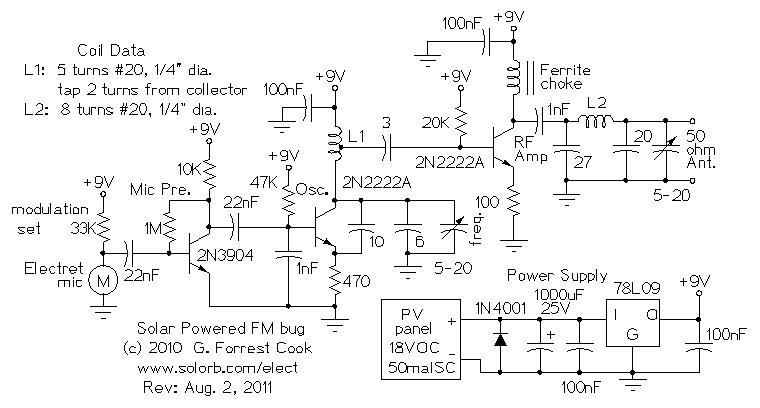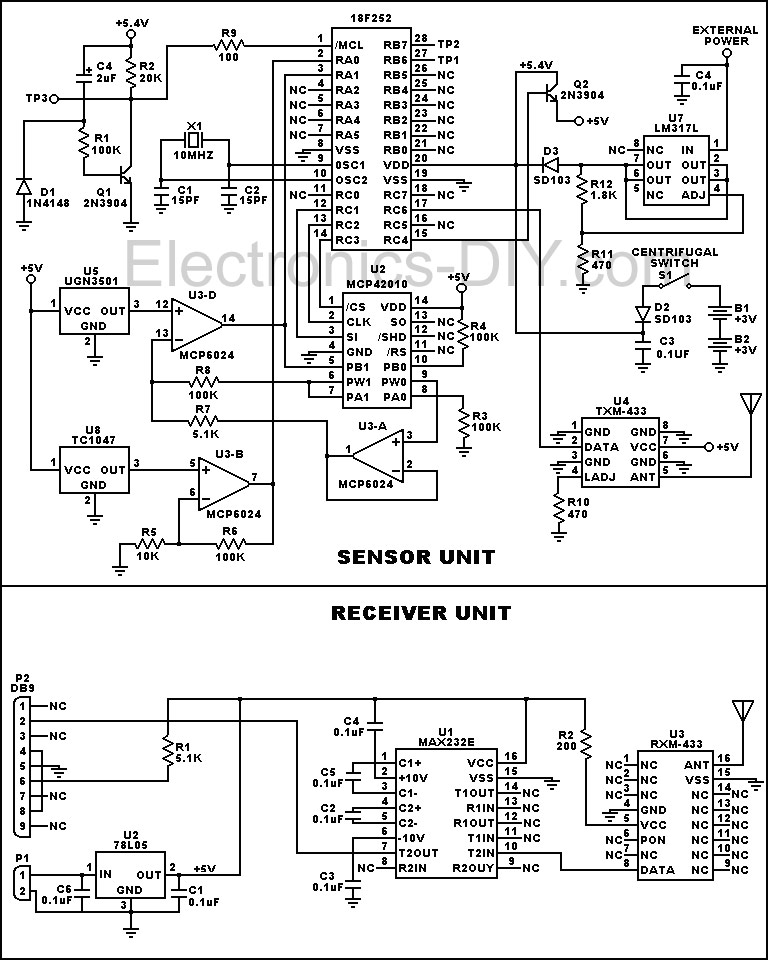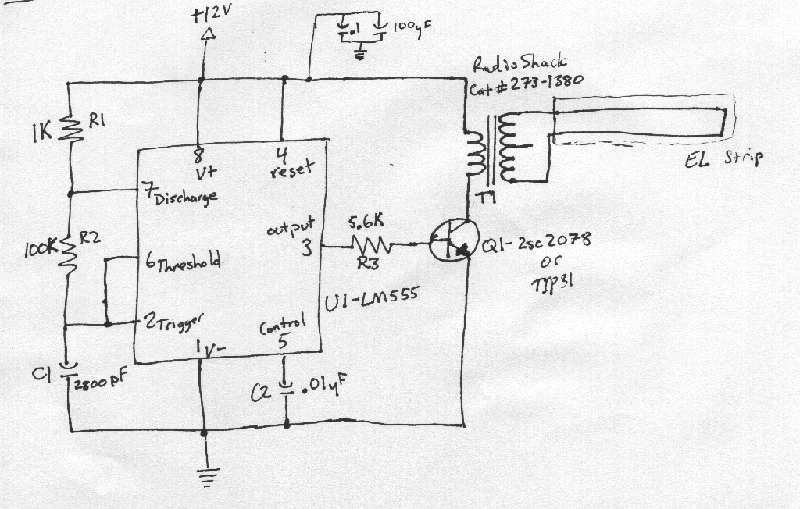
Three-Level Audio Power Indicators

This circuit indicates audio output power using three LEDs. It serves as a useful addition to an amplifier.
The audio output power indicator circuit is designed to visually represent the power level of an audio amplifier through the use of three light-emitting diodes (LEDs). Each LED corresponds to a specific range of output power, providing a clear and immediate visual cue of the amplifier's performance.
The circuit typically operates by monitoring the output voltage of the amplifier. A voltage divider may be employed to scale down the output voltage to a manageable level suitable for the LED driver circuit. The LEDs are then connected to a comparator or a series of comparators that are configured to turn on at predetermined voltage thresholds.
For instance, the first LED may illuminate at low power levels, indicating safe operation, while the second LED activates at a medium power level, suggesting that the amplifier is approaching its limits. The third LED lights up at high power levels, alerting the user to potential overdrive conditions.
To ensure accurate operation, resistors are used to limit the current flowing through each LED, preventing damage and ensuring longevity. Additionally, capacitors may be included in the circuit to filter any noise from the power signal, providing a more stable and reliable indication of output power.
This circuit can be integrated into various amplifier designs, enhancing usability by providing real-time feedback on audio output levels. It is an effective tool for audio enthusiasts and professionals alike, allowing for better management of amplifier performance and preventing potential damage due to overdriving.This circuit indicates audio output power via three LEDs. Nice addon to your amplifier.. 🔗 External reference
The audio output power indicator circuit is designed to visually represent the power level of an audio amplifier through the use of three light-emitting diodes (LEDs). Each LED corresponds to a specific range of output power, providing a clear and immediate visual cue of the amplifier's performance.
The circuit typically operates by monitoring the output voltage of the amplifier. A voltage divider may be employed to scale down the output voltage to a manageable level suitable for the LED driver circuit. The LEDs are then connected to a comparator or a series of comparators that are configured to turn on at predetermined voltage thresholds.
For instance, the first LED may illuminate at low power levels, indicating safe operation, while the second LED activates at a medium power level, suggesting that the amplifier is approaching its limits. The third LED lights up at high power levels, alerting the user to potential overdrive conditions.
To ensure accurate operation, resistors are used to limit the current flowing through each LED, preventing damage and ensuring longevity. Additionally, capacitors may be included in the circuit to filter any noise from the power signal, providing a more stable and reliable indication of output power.
This circuit can be integrated into various amplifier designs, enhancing usability by providing real-time feedback on audio output levels. It is an effective tool for audio enthusiasts and professionals alike, allowing for better management of amplifier performance and preventing potential damage due to overdriving.This circuit indicates audio output power via three LEDs. Nice addon to your amplifier.. 🔗 External reference





